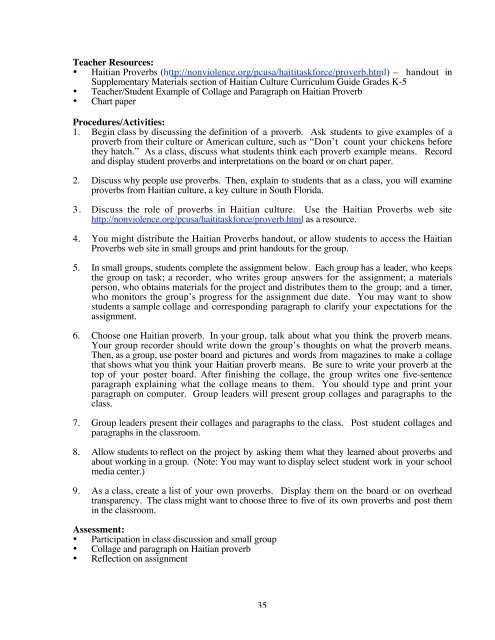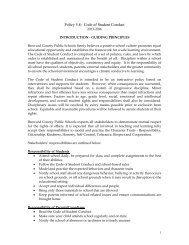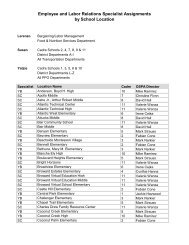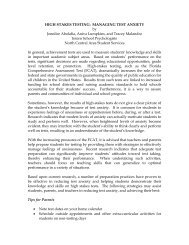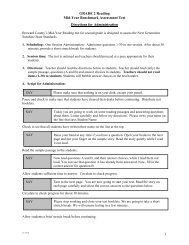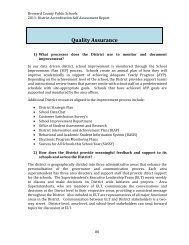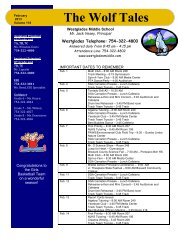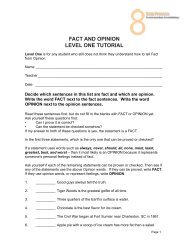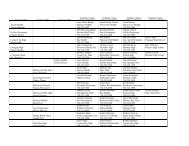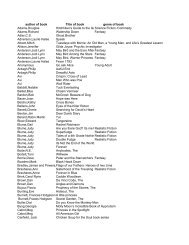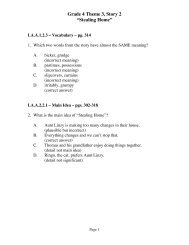Haitian Culture Curriculum Guide
Haitian Culture Curriculum Guide
Haitian Culture Curriculum Guide
You also want an ePaper? Increase the reach of your titles
YUMPU automatically turns print PDFs into web optimized ePapers that Google loves.
Teacher Resources:<br />
• <strong>Haitian</strong> Proverbs (http://nonviolence.org/pcusa/haititaskforce/proverb.html) – handout in<br />
Supplementary Materials section of <strong>Haitian</strong> <strong>Culture</strong> <strong>Curriculum</strong> <strong>Guide</strong> Grades K-5<br />
• Teacher/Student Example of Collage and Paragraph on <strong>Haitian</strong> Proverb<br />
• Chart paper<br />
Procedures/Activities:<br />
1. Begin class by discussing the definition of a proverb. Ask students to give examples of a<br />
proverb from their culture or American culture, such as “Don’t count your chickens before<br />
they hatch.” As a class, discuss what students think each proverb example means. Record<br />
and display student proverbs and interpretations on the board or on chart paper.<br />
2. Discuss why people use proverbs. Then, explain to students that as a class, you will examine<br />
proverbs from <strong>Haitian</strong> culture, a key culture in South Florida.<br />
3. Discuss the role of proverbs in <strong>Haitian</strong> culture. Use the <strong>Haitian</strong> Proverbs web site<br />
http://nonviolence.org/pcusa/haititaskforce/proverb.html as a resource.<br />
4. You might distribute the <strong>Haitian</strong> Proverbs handout, or allow students to access the <strong>Haitian</strong><br />
Proverbs web site in small groups and print handouts for the group.<br />
5. In small groups, students complete the assignment below. Each group has a leader, who keeps<br />
the group on task; a recorder, who writes group answers for the assignment; a materials<br />
person, who obtains materials for the project and distributes them to the group; and a timer,<br />
who monitors the group’s progress for the assignment due date. You may want to show<br />
students a sample collage and corresponding paragraph to clarify your expectations for the<br />
assignment.<br />
6. Choose one <strong>Haitian</strong> proverb. In your group, talk about what you think the proverb means.<br />
Your group recorder should write down the group’s thoughts on what the proverb means.<br />
Then, as a group, use poster board and pictures and words from magazines to make a collage<br />
that shows what you think your <strong>Haitian</strong> proverb means. Be sure to write your proverb at the<br />
top of your poster board. After finishing the collage, the group writes one five-sentence<br />
paragraph explaining what the collage means to them. You should type and print your<br />
paragraph on computer. Group leaders will present group collages and paragraphs to the<br />
class.<br />
7. Group leaders present their collages and paragraphs to the class. Post student collages and<br />
paragraphs in the classroom.<br />
8. Allow students to reflect on the project by asking them what they learned about proverbs and<br />
about working in a group. (Note: You may want to display select student work in your school<br />
media center.)<br />
9. As a class, create a list of your own proverbs. Display them on the board or on overhead<br />
transparency. The class might want to choose three to five of its own proverbs and post them<br />
in the classroom.<br />
Assessment:<br />
• Participation in class discussion and small group<br />
• Collage and paragraph on <strong>Haitian</strong> proverb<br />
• Reflection on assignment<br />
35


